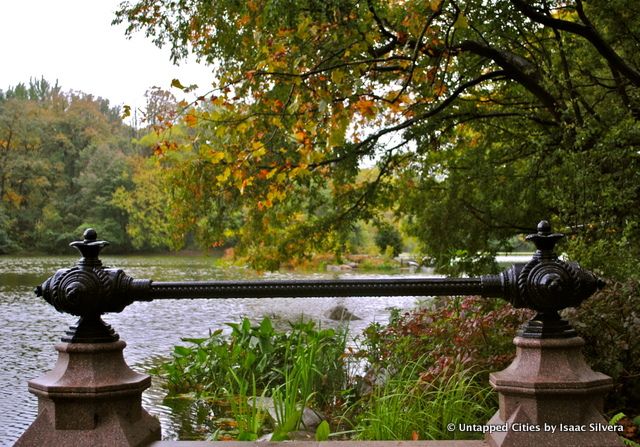NYC Just Had Its Worst Year for Brush Fires this Decade
As brush fires continue to rage in the New York area, data shows that they’ve become more prevalent in recent years.


Prospect Park has changed since Frederick Law Olmstead and Calvert Vaux designed it in 1866, but the Prospect Park Alliance along with the City of New York have partnered up to restore the original vision of the architects. Dubbed the Lakeside Campaign, the project aims to renovate twenty-six acres of parkland, add five acres to Prospect Lake, in addition to three more acres of green space. This is more than needed, as Brooklyn has the lowest ratio of green space to residence in the nation. According to the campaign, their vision seeks to “meet the needs of a uniquely vibrant, diverse, 21st century community.”
Last week, we attended the opening of Music Island, the Esplanade and Lower Concert Grove, a restoration of the original designs of Olmstead of Vaux, modified in in the 20th century to accomodate an ice skating rink. These areas were once one of the most formally designed and centrally located in the park. Equestrians, musicians and artists filled Music Island with life and culture, despite problematic acoustics, but in 1960 Wollman Rink was constructed in order to accommodate the community’s growing passion for ice-skating. The rink was built on Music Island and was only open to the public during the winter season. As a frequent user of the Wollman Rink and with eighteen years of ice hockey under my belt, it pains me to say that the rink did indeed ruin the natural flow of the park and its original elegance.
The Lakeside Campaign, led by Tupper Thomas, the President of the Prospect Park Alliance who provided the entire budget for landscaping, demolished Wollman Rink and reclaimed Music Island. The rink was problematic due to its disturbance of the natural habitat, constant repair, and only one season worth of value. The space that once was occupied by the rink is now restored to its exact dimension with a few improvements. In hopes to regain the flora, fauna, and overall ecology that once filled the park with life, the fish sanctuary was restored and the turtles reintroduced to a place they once called home.
In the restoration, the engineers recovered materials from the original design that were dumped inside the lake during the construction of the rink. In the dredging, they discovered one piece of original railing and were able to recreate that portion of the park exactly to what it was historically.
Brooklyn hockey players are misplaced at the moment but will be happy to return to two brand new skating facilities providing 30,000 square feet of surface. During the warm weather seasons, roller-skating and water features will be held on the smaller circular rink. As a constant visitor of Prospect Park it is comforting to see the Prospect Park Alliance find middle ground on balancing the ever-growing niche of hockey and the passionate desire to reconstruct the park the way it was originally designed.
 Music Island, Prospect Park (Authentic railings from original plan)
Music Island, Prospect Park (Authentic railings from original plan)
Prospect Park is said to be Olmstead’s personal masterpiece out of all his park designs, praised even more then Central Park. Prospect Park consists of sports facilities, green lounging areas, and is accompanied by the beautiful Brooklyn Botanical Gardens. The restoration of Music Island is truly breathtaking. Whether you are boating, skating or even enjoying a bite to eat at the new café you will not be disappointed. Expanded picnic areas and the new promenade open up the park in a warm welcoming way.
Subscribe to our newsletter